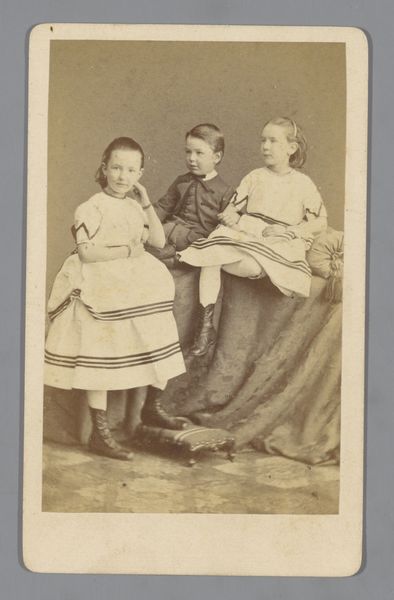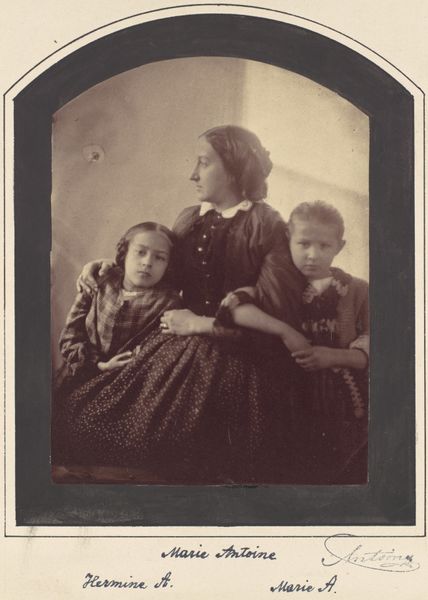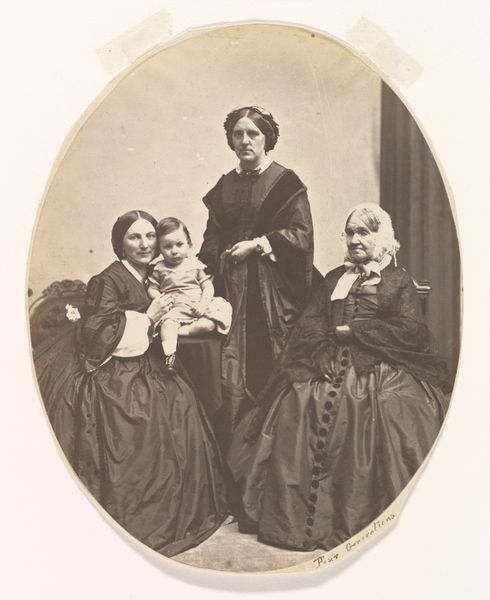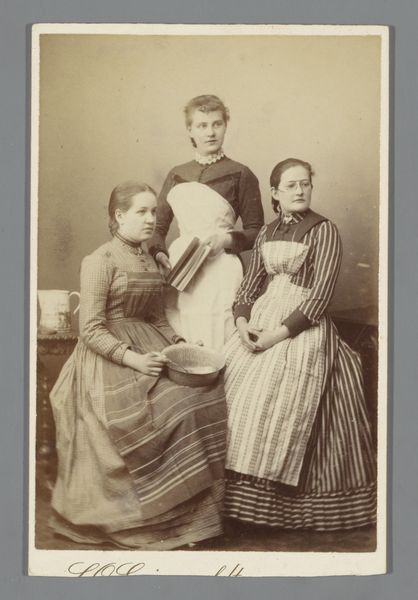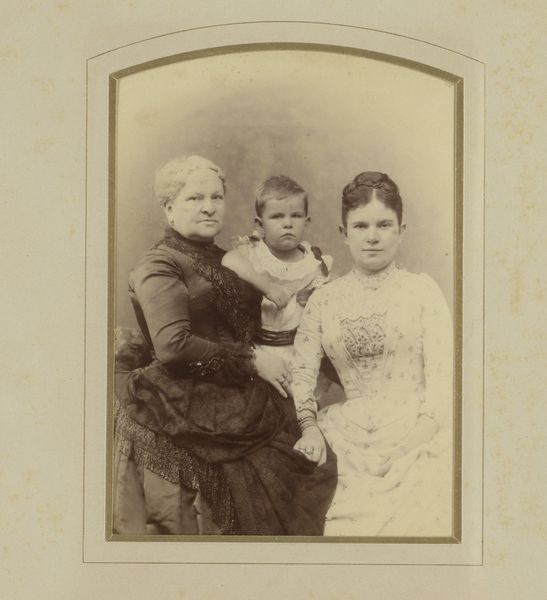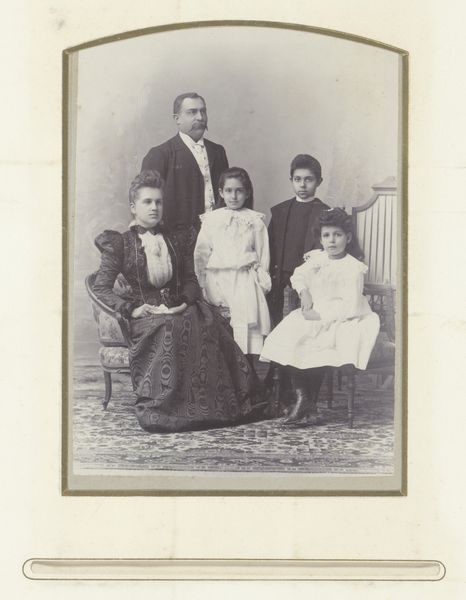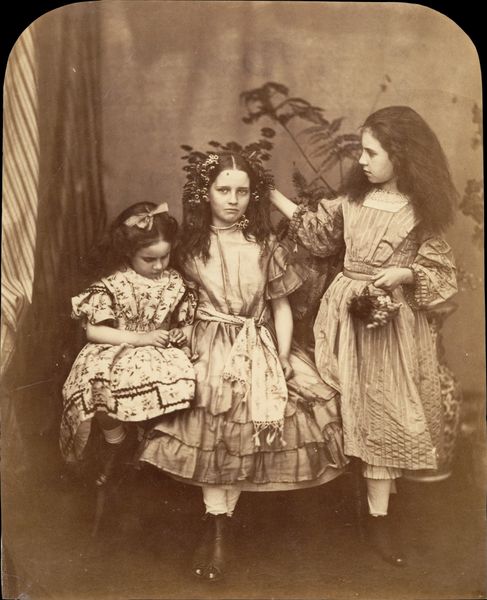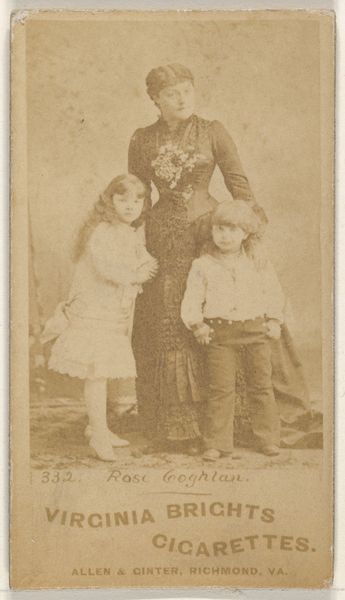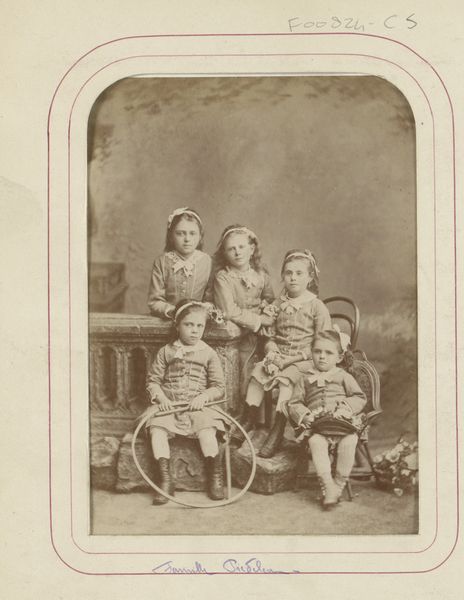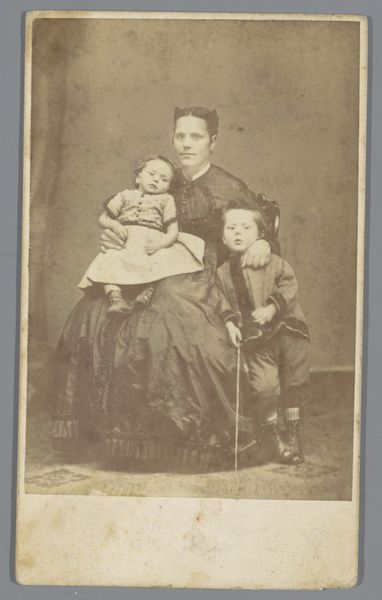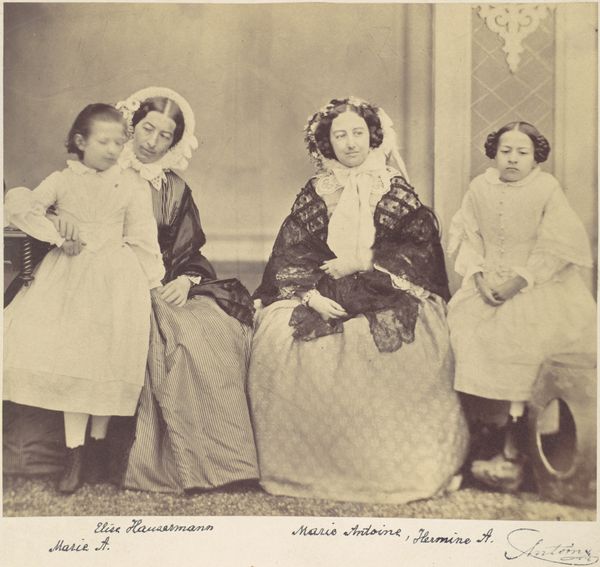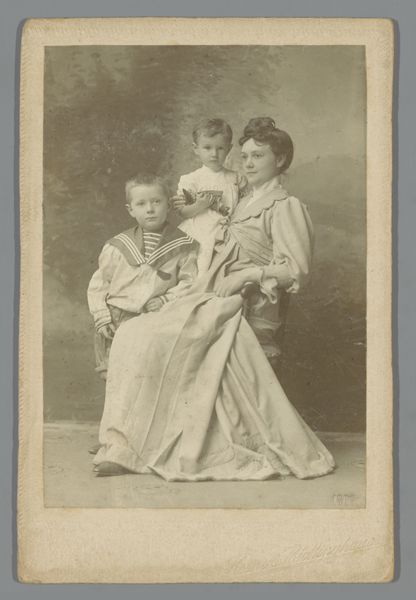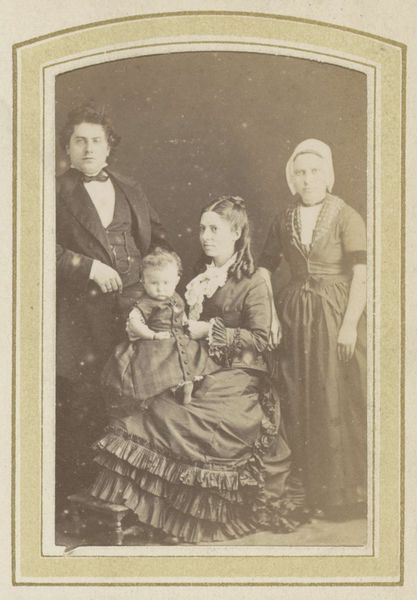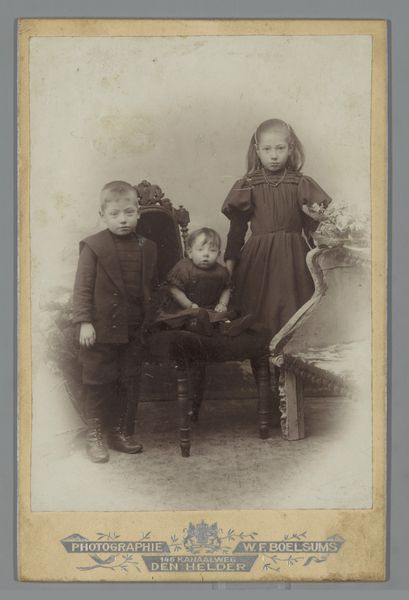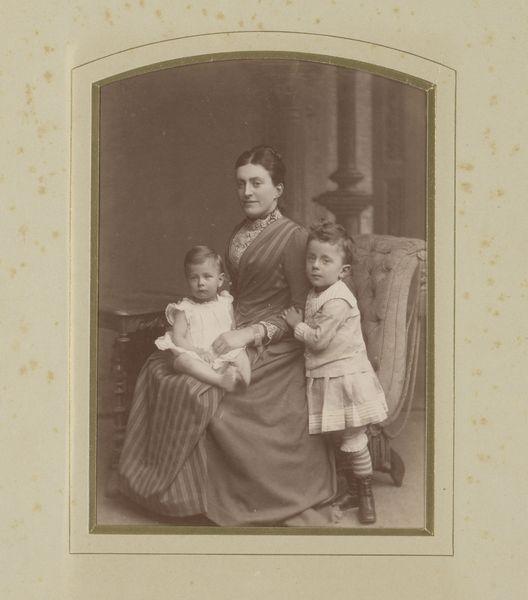
Our Protection. Rosa, Charley, Rebecca. Slave Children from New Orleans. 1864
0:00
0:00
photography, albumen-print
#
portrait
#
african-art
#
narrative-art
#
social-realism
#
photography
#
historical photography
#
19th century
#
albumen-print
#
realism
Dimensions: image/sheet: 8.2 × 5.3 cm (3 1/4 × 2 1/16 in.) mount: 10 × 6 cm (3 15/16 × 2 3/8 in.)
Copyright: National Gallery of Art: CC0 1.0
Curator: This haunting albumen print from 1864 is titled "Our Protection. Rosa, Charley, Rebecca. Slave Children from New Orleans." It depicts three young children, partially draped in what appear to be Confederate flags. The photographer is unknown. Editor: It's immediately striking how small they appear, huddled together and dwarfed by those enormous, emotionally-charged textiles. It evokes such conflicting feelings, a mix of vulnerability and defiance. Curator: Exactly. The albumen print process itself is important here. Consider the labor involved, the materials used. The creation of the image, a relatively new technology at the time, offered a stark representation that could be widely disseminated and consumed, thus turning the children into powerful tools of abolitionist messaging. The flags are also relevant since there has been discussion around whether those are American or confederate flags, thus questioning whether the image can be interpreted differently. Editor: Absolutely, and those Confederate flags… Their presence transforms this image into a potent symbol of the era’s brutal complexities. It’s not just a photograph; it's an intentional layering of signs. Stars, stripes, the deep-seated symbolism of protection versus oppression—it all contributes to a profoundly disquieting narrative. I wonder how the image could mean a totally different thing nowadays versus back then. Curator: I'm fascinated by how the ambiguity in the symbolism impacts the work's interpretation and legacy. If the materials represent freedom or repression, this in turn directly affect its message, production, and distribution and influence its ability to function as an effective abolitionist image. Editor: Right, so, are the flags meant to portray the protection that has been stolen, or do they convey an illusion of protection in this image that is quite obviously about lost childhood? It's a dense and complex image that evokes a lot of the historical moment it tries to portray. Curator: The production of such an image at this time and context speaks volumes about its intentions. Thinking through the material reality of that—the photograph and flags—reveals to me the powerful anti-slavery networks that circulated materials during the war. Editor: Indeed. And those symbols continue to resonate with cultural memory, and they serve as a constant, painful reminder of the nation’s deepest wounds. It's important to continue grappling with the artwork and its history.
Comments
No comments
Be the first to comment and join the conversation on the ultimate creative platform.
